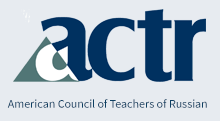Russian Language Journal
Keywords
Brighton Beach, New York, heritage language studies, Russian language learning
Abstract
Within the burgeoning linguistic field of heritage language studies, two research traditions have emerged in recent years. The first, adopted most commonly in the studies of less robustly maintained heritage languages, draws generalizations across grammars instantiated in individual heritage language idiolects, taking as its focal point what diachronic linguists term the innovation phase of language change (Croft, 2000). The other approach, manifested most representatively in accounts of linguistic varieties emerging in relatively more established speech communities, focuses more closely on features that become conventionalized among heritage language speakers, a component of language change known as propagation (Croft, 2000). Considering the relatively restricted sociodemographic niche of Russian in the United States (Laleko, 2013), most available linguistic investigations of structural properties of Russian as a heritage language in the U.S. have been carried out within the former approach, with data typically drawn from speakers recruited outside of clearly demarcated communities and undergoing language change independently of one another.
Recommended Citation
Laleko, O., & Miroshnychenko, Y. (2022). Grammars in Contact: A Linguistic Study of Russian in Brighton Beach, New York. Russian Language Journal, 72(1). https://doi.org/10.70163/0036-0252.1289

